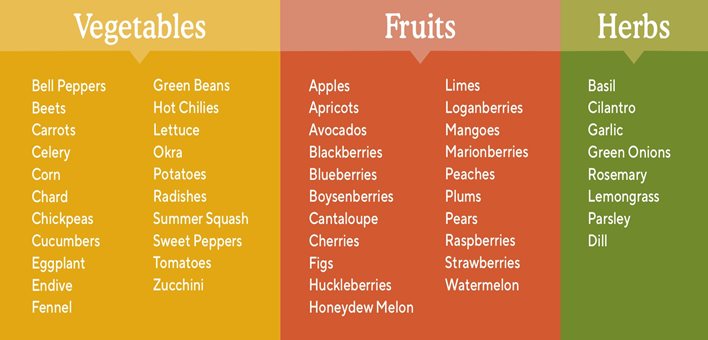Fruits and vegetables grown in their natural season are picked ripe and at the peak of their flavor. With adequate time to ripen, a higher percent of nutrients can be retained, increasing the overall nutrition of the produce. Supporting local, in season produce also reduces the energy needed to grow and transport food that has to be grown in another climate. Because of this, less packaging, processing, preservatives, and oil energy are used to get the food from the farm to your plate. When you find asparagus in December, it most likely has not been grown in the United States, but rather flown in from South America or another climate where the vegetable can thrive at that time. With the wide array of fruits and vegetables that are offered naturally by the season, it is worth exploring new recipes to incorporate them into your meals.

This summer if you are interested in making the switch to eating more local and seasonal foods, here are some steps to follow to get started.
-
Replace a few imported foods you eat on a regular basis with a food that is in season. For example, replace bananas on your oatmeal or yogurt with sliced peaches or nectarines.
-
Do some research! Find out what grows seasonally within 100 miles of where you live and try to incorporate it into your meals.
-
Learn to can and freeze! Make jams, pestos, and tomato sauces with the fresh produce of the season and enjoy them all year round!
-
Seek out and support restaurants that offer local produce and seasonal menu items in your area. Additionally, consider subscribing to a CSA, or Community Supported Agriculture, box from a farm near you.
To find local food vendors and farmers markets in your area check out http://www.localharvest.org/farmers-markets/.
Seasonal Summer Recipes:
Feta and Tomato Quiche
Mason Jar Salads with Croutons
Green Goddess Pizza
Strawberry Shortcake Bites
Asparagus Galette
Summer Berry Jam
Sauteed Cherry Tomatoes